
GINZA CONNECTIVE
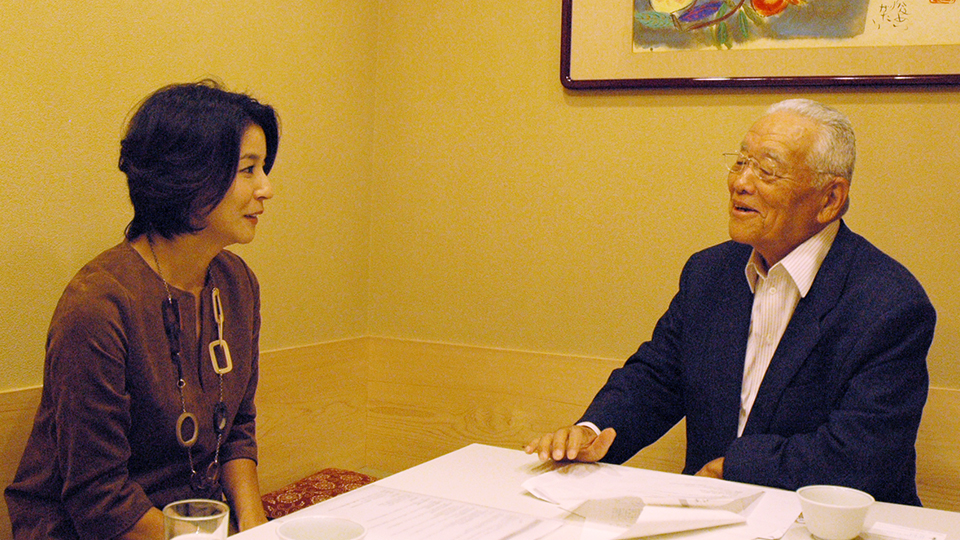
GINZA CONNECTIVE VOL.3
Hitoshi Ishihara×Chisako Takashima
2011.12.01
A talk series with the violinist Chisako Takashima and the Ginza people. Ginza holds many personal and professional memories for Takashima. In this talk series, she thoroughly explores various aspects of the Ginza culture with her guests. Today’s guest is Hitoshi Ishihara, the second generation owner of Ginza Yasuko, an oden shop and a central figure in Ginza.
In the olden days, Ginza-dori was glamorous, lined with stalls every day.
- Takashima
- I came here today knowing I might hear some stories about the old Ginza that would surprise everyone. I heard that you were born and raised in Ginza.
- Ishihara
- I was born in Fukagawa in 1930. My father originally ran a lumber shop. Then, in 1933, my father and mother opened the oden shop. I transferred to Taimei Elementary School in the second term of grade 1, just after the summer holidays.
- Takashima
- Really?
There aren’t so many people living in Ginza nowadays. How many students were there at Taimei Elementary School in those days? - Ishihara
- There were a lot of shopowners’ kids at the time, so there were about 100 students per grade, with a total of about 600 students.
- Takashima
- That many! There were quite a lot of kids, then.
Were there places to play? - Ishihara
- Yes, plenty. One of my most memorable places was the Hachikan shrine on 8-chome. I used to play there all the time. It was demolished during the bubble period. I played in the schoolyard on the way home from school, and picture card shows came to the shrine grounds. Ginza was the downtown area back then.
- Takashima
- That was the atmosphere on Ginza-dori?
- Ishihara
- On no, Ginza-dori was different.
Kids were told that it wasn’t a place for them to be running around.
There were willow trees, and beautiful people were walking around in their street clothes. My parents told me to walk home by the back alleys (laughs). - Takashima
- That’s enchanting.
Unfortunately, there are no signs of that at all anymore. - Ishihara
- You’re right.
Now there is a highway running through Ginza, but it used to be all rivers.
My memories are of willow trees, promotional hot air balloons in the sky, streetcars, and rivers. - Takashima
- Does that mean the highway runs where a river used to be?
- Ishihara
- Exactly. Sukiya-bashi and Shin-bashi are names of bridges, right? All those intersections had rivers running through them. We would go fishing and ride boats down the river.
Also there were the streetcars that ran through Ginza to Kanda and Shinagawa. - Takashima
- Wow, the atmosphere must have been completely different.
- Ishihara
- The biggest difference was the stalls that lined the streets every night.
- Takashima
- That’s surprising. It’s just like a festival!
- Ishihara
- Exactly! Stands lined the streets every day, just like a festival. Before New Years, we would go to the stalls to buy karuta cards or playing cards. I remember there were lines of people like Fuuten no Tora-san (=Tora-san, His Tender Love).
- Takashima
- It sounds like you could enjoy the Ginza night differently than how we do now.
- Ishihara
- Now the streets get very lonely after 8 o’clock, but in the olden days, the stalls stayed open past 9, and the area was very lively. Events were held three times a month behind Matsuya, and they sold inarizushi and yakisoba. It really was like a festival every day (laughs). I felt that it wouldn’t have been Ginza otherwise.
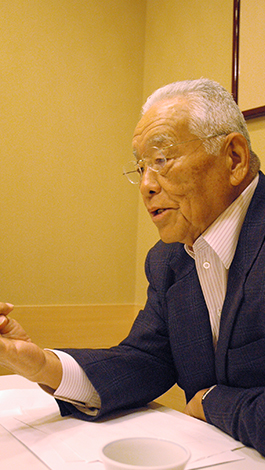
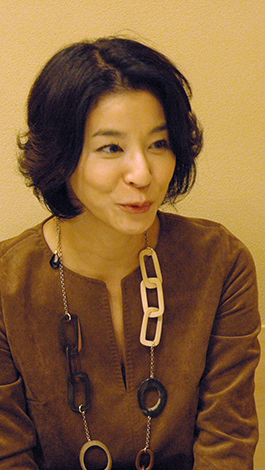
Oden made by a professional has distinct qualities.
- Takashima
- Your shop has been here a long time. Do you have any regulars who have continued coming for years and years?
- Ishihara
- Yes, we have customers who have been coming for 40 or 50 years.
- Takashima
- Wow, that’s amazing! Was it difficult to learn all the work?
- Ishihara
- My father never raised a hand against me, but he was pretty strict.
He would only teach me something once, never showing me something carefully again and again. - Takashima
- Are you the same to the third generation?
- Ishihara
- No, I’m pretty easy on him (laugh). He is working hard to pass on his father’s recipes. But, even so, it is certainly important to make it all by our hands professionally. Using machines can make food to a certain extent, but it has no personality. The distinct qualities of our products were different between my generation and the previous one, and also now with the third generation. This is a good thing.
- Takashima
- Did you grow up eating oden at home from when you were a kid?
- Ishihara
- Yes, I did. I still often eat oden. When I’m not well, I eat oden and it makes me feel better.
- Takashima
- At my home, when we make oden, we continue eating it for the next 3 or 4 days. It’s healthy and it’s easy for young kids to eat. Are there any distinctive differences between oden in the Kanto area and the Kansai area?
- Ishihara
- They use different items. Whether the soup stock is stronger or weaker depends on the store, but you usually won’t find hanpen or fish balls in the Kansai region. And in Shizuoka, they often use black hanpen. But in anywhere, oden is a common dish, and I think everyone eating out of the same pot suits Japanese people.
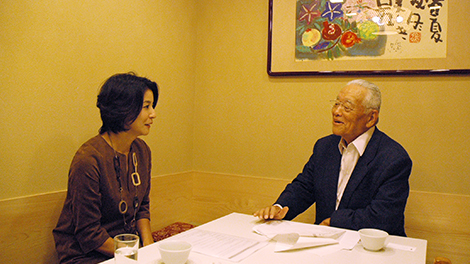
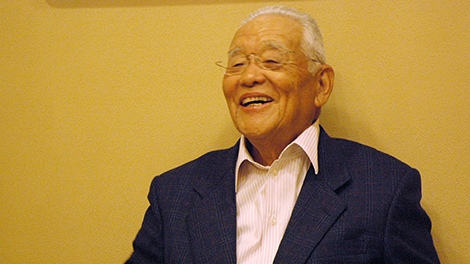
1 2
All List
- GINZA CONNECTIVE VOL.0 Ryo Sayegusa×Chisako Takashima
- GINZA CONNECTIVE VOL.1 Toshiyuki Kosaka×Chisako Takashima
- GINZA CONNECTIVE VOL.2 Yasuharu Mizuhara×Chisako Takashima
- GINZA CONNECTIVE VOL.3 Hitoshi Ishihara×Chisako Takashima
- GINZA CONNECTIVE VOL.4 Shinji Hara×Chisako Takashima
- GINZA CONNECTIVE VOL.5 Choichiro Motoyama×Chisako Takashima
- GINZA CONNECTIVE VOL.6 Noriko Okazoe×Chisako Takashima
- GINZA CONNECTIVE VOL.7 Choichiro Motoyama×Chisako Takashima
- GINZA CONNECTIVE VOL.8 Sayuri Yamaguchi×Chisako Takashima
- GINZA CONNECTIVE VOL.9 Yoshiki Tani×Chisako Takashima
- GINZA CONNECTIVE VOL.10 Yoshifumi Itoh×Chisako Takashima
- GINZA CONNECTIVE VOL.11 Kunihiko Miwa×Chisako Takashima
- GINZA CONNECTIVE VOL.12 Shin Watanabe×Chisako Takashima
- GINZA CONNECTIVE VOL.13 Akihiko Tsuda×Chisako Takashima
- GINZA CONNECTIVE VOL.14 Rie Horikawa×Chisako Takashima
- GINZA CONNECTIVE VOL.15 Jun Takahashi×Chisako Takashima
- GINZA CONNECTIVE VOL.16 Yusuke Harada×Chisako Takashima
- GINZA CONNECTIVE VOL.17 Lintaro Mizuhara×Chisako Takashima
- GINZA CONNECTIVE VOL.18 Keisuke Anzai×Chisako Takashima
- GINZA CONNECTIVE VOL.19 Hozu Yamamoto×Chisako Takashima
- GINZA CONNECTIVE VOL.20 Koji Shibata×Chisako Takashima
- GINZA CONNECTIVE VOL.21 Kayo Hosono×Chisako Takashima
- GINZA CONNECTIVE VOL.22 Mitsuru Saito×Chisako Takashima
- GINZA CONNECTIVE VOL.23 Akihisa Kawaguchi×Chisako Takashima
- GINZA CONNECTIVE VOL.24 Mamoru Sugiyama×Chisako Takashima
- GINZA CONNECTIVE VOL.25 Michiaki Kumagai×Chisako Takashima
- GINZA CONNECTIVE VOL.26 Shinichi Tanizawa×Chisako Takashima
- GINZA CONNECTIVE VOL.27 Koichi Suzuki×Chisako Takashima
- GINZA CONNECTIVE VOL.28 Munehito Matsuzaki×Chisako Takashima
- GINZA CONNECTIVE VOL.29 Hiroshi Hara × Chisako Takashima
- GINZA CONNECTIVE VOL.30 Shigeyuki Ando×Chisako Takashima
- GINZA CONNECTIVE VOL.31 Yukichi Ishikura × Chisako Takashima
- GINZA CONNECTIVE VOL.32 Seiko Yamada × Chisako Takashima
- GINZA CONNECTIVE VOL.33 Mami Nagai × Chisako Takashima
- GINZA CONNECTIVE VOL.34 Ryuta Takahashi × Chisako Takashima
- GINZA CONNECTIVE VOL.35 Kazumasa Osumi×Chisako Takashima
- GINZA CONNECTIVE VOL.36 Masahiro Kameoka×Chisako Takashima
- GINZA CONNECTIVE VOL.37 Shoichiro Watanabe×Chisako Takashima
- GINZA CONNECTIVE VOL.38 Keiji Niimoto×Chisako Takashima
- GINZA CONNECTIVE VOL.39 Chieko Nakamura ×Chisako Takashima
- GINZA CONNECTIVE VOL.40 Atsushi Yamane×Chisako Takashima
- GINZA CONNECTIVE VOL.41 Masaya Shibuya×Chisako Takashima
- GINZA CONNECTIVE VOL.42 Makoto Suzuki×Chisako Takashima
- GINZA CONNECTIVE VOL.43 Masaya Konaka×Chisako Takashima
- GINZA CONNECTIVE VOL.44 Masakazu Tanaka×Chisako Takashima
- GINZA CONNECTIVE VOL.45 Koko Kameoka × Chisako Takashima
- GINZA CONNECTIVE VOL.46 Jin Hirayama×Chisako Takashima
- GINZA CONNECTIVE VOL.47 Takashi Hoshihara×Chisako Takashima
- GINZA CONNECTIVE VOL.48 Mikiko Kimura × Chisako Takashima
- GINZA CONNECTIVE VOL.49 Keisuke Okamoto×Chisako Takashima
- GINZA CONNECTIVE VOL.50 Akira Ito × Chisako Takashima
- GINZA CONNECTIVE VOL.51 Tatsuhiko Adachi × Chisako Takashima
- GINZA CONNECTIVE VOL.52 Masahiko Yamano×Chisako Takashima
- GINZA CONNECTIVE VOL.53 Kiyoshi Kanazashi×Chisako Takashima
- GINZA CONNECTIVE VOL.54 Noriyuki Tsuji×Chisako Takashima
- GINZA CONNECTIVE VOL.55 Shoichi Kobayashi×Chisako Takashima
- GINZA CONNECTIVE VOL.56 Isao Nanjo×Chisako Takashima
- GINZA CONNECTIVE VOL.57 Shinobu Mitsuoka×Chisako Takashima
- GINZA CONNECTIVE VOL.58 Motoyoshi Yasuda×Chisako Takashima
- GINZA CONNECTIVE VOL.59 Toru Fujiki×Chisako Takashima
- GINZA CONNECTIVE VOL.60 Yuji Ida×Chisako Takashima
- GINZA CONNECTIVE VOL.61 Hitoshi Miki×Chisako Takashima
- GINZA CONNECTIVE VOL.62 Takehiko Furuya× Chisako Takashima
- GINZA CONNECTIVE VOL.63 Naoki Yoshizawa×Yusuke Yoshizawa×Chisako Takashima
- GINZA CONNECTIVE VOL.64 Kazuhito Kawase × Chisako Takashima
- GINZA CONNECTIVE VOL.65 Toshiji Yuki× Chisako Takashima
- GINZA CONNECTIVE VOL.66 Hikoyuki Yamaguchi×Chisako Takashima
- GINZA CONNECTIVE VOL.67 Daisuke Nagano×Chisako Takashima
- GINZA CONNECTIVE VOL.68 Shuichi Motohashi× Chisako Takashima
- GINZA CONNECTIVE VOL.69 Shinpei Tonaka×Chisako Takashima
- GINZA CONNECTIVE VOL.70 Shinya Kanematsu × Sachiko Takashima
- GINZA CONNECTIVE VOL.71 Masataka Yano×Chisako Takashima
- GINZA CONNECTIVE VOL.72 Mitsuhiro Kurokawa× Chisako Takashima
- GINZA CONNECTIVE VOL.73 Ryo Saegusa×Chisako Takashima








